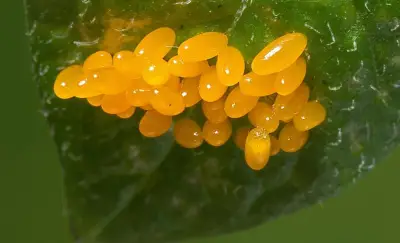Forget the calendar: This method reveals the ideal time to tackle garden pests

By JESSICA DAMIANO I hate to break it to you but just like your calendar can t tell you the best time to harvest it won t provide you the perfect date to attack the pests waging war on your plants Timing effective pest control is all about understanding how the weather affects insect life cycles We know that most of plants and insects emerge in spring advance through summer and in cold regions go dormant over winter But beyond those general seasonal cycles there s no way to predict precisely when for example seeds will sprout garlic will be ready for harvest or pests will be at their preponderance vulnerable Those developmental stages vary from year to year because they re dependent on the weather That s where growing degree days come in GDD is a cumulative system used to determine exactly when plants and insects will reach certain stages of maturity And with so much variability with different pests having different life stages that are vulnerable or resistant to different control methods at different times it s a helpful tool for gardeners The system introduced by the French entomologist Ren Antoine Ferchault de R aumur in is a measurement of heat accumulation that accurately predicts when seeds will germinate crops will mature and specific pest populations will hatch and reach advancing stages of maturity The progression of an insect s life cycle like much of the natural world s biological activity is dictated by environmental factors like temperature And because not every life stage will succumb to recovery weather is the only thing that can truly accurately inform the timing of countless control methods Here s how it works The average daily temperature is typically recorded on March and for each degree over degrees Fahrenheit one point is assigned Then every day throughout the remainder of the season the number of degrees over is added to a running tally If the temperature is exactly at or below degrees the day is assigned a sum of zero Let s say the temperature was degrees on March the GDD on that day would be If it was on March the GDD would be plus or If the temperature was on March that would add nothing and the accumulated growing degree days would remain at The tally continues to grow through a regionally specific date in the fall Seems complicated The good news is you don t have to crunch the numbers yourself Your local cooperative extension office likely tailors and tracks this information for your region and several post the GDD as well as pest- and plant-specific GDD guidelines on their websites In addition the agricultural company Syngenta offers a handy tool among its GreenCast online guidance that hurriedly generates the GDD for your zip code What does this mean for your garden As an example Colorado potato beetle eggs and pupae are not susceptible to pesticides so attempting control during those stages would be pointless But their larvae are vulnerable to the natural biological control Bt from the time they emerge until they reach inch in length Rather than heading out into the garden with a ruler or spraying every day and hoping for the best you can time the application for between and GDD This May image provided by Jessica Damiano shows an infestation of scale insects on a leaf in North Babylon N Y Jessica Damiano via AP This image provided by Bugwood org shows three adult Colorado potato beetles on a plant David Cappaert Bugwood org via AP This image provided by Bugwood org shows a Colorado potato beetle larva on a plant David Cappaert Bugwood org via AP This image provided by Bugwood org shows a Colorado potato beetle pupa Whitney Cranshaw Colorado State University Bugwood org via AP Show Caption of This May image provided by Jessica Damiano shows an infestation of scale insects on a leaf in North Babylon N Y Jessica Damiano via AP Expand Similarly the first generation of euonymus scale insects are majority vulnerable to Neem oil and horticultural oil treatments between and GDD And for pre-emergent crabgrass controls like corn gluten meal to be effective they should be applied just before GDD That s why I recommend a therapy window that coincides with the time between when the first forsythia blooms and the last of the lilacs fade It s a visual cue tied to nature s reaction to temperature Depending on the variety majority of tomatoes which love the heat are ripe for the picking between and GDD But for the record my tomatoes dependably let me know when they re ready Jessica Damiano writes weekly gardening columns for the AP and publishes the award-winning Weekly Dirt Newsletter You can sign up here for weekly gardening tips and advice For more AP gardening stories go to https apnews com hub gardening
